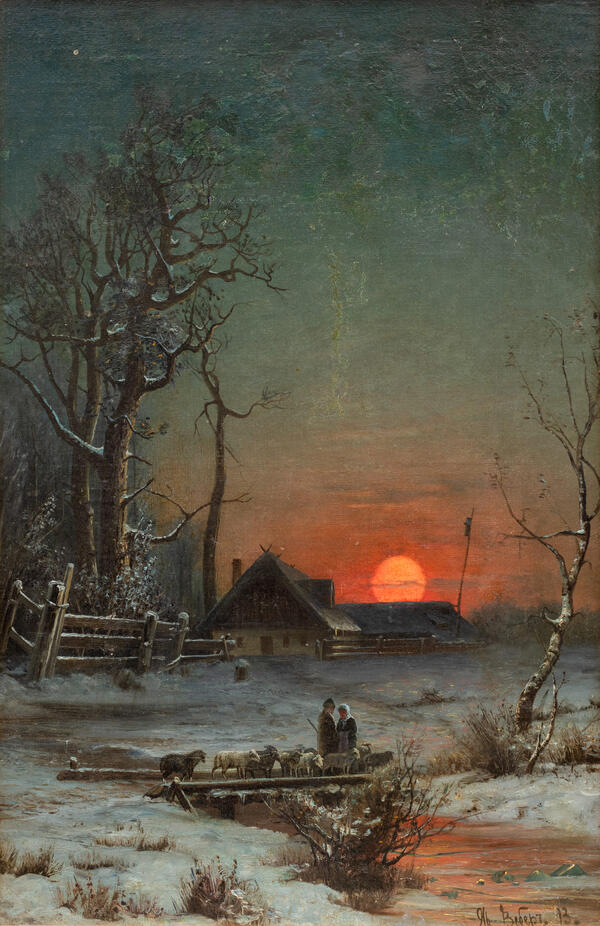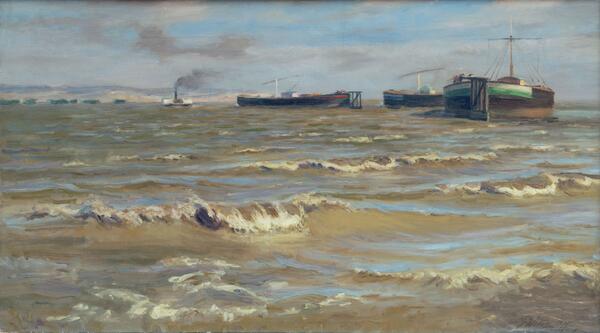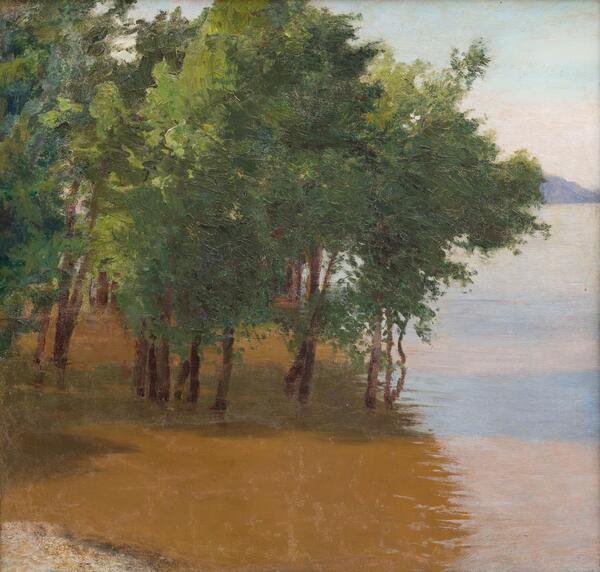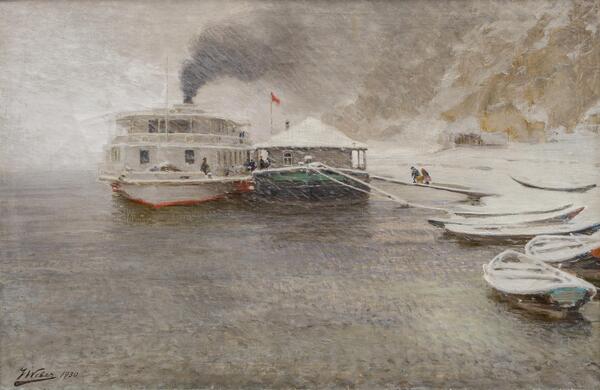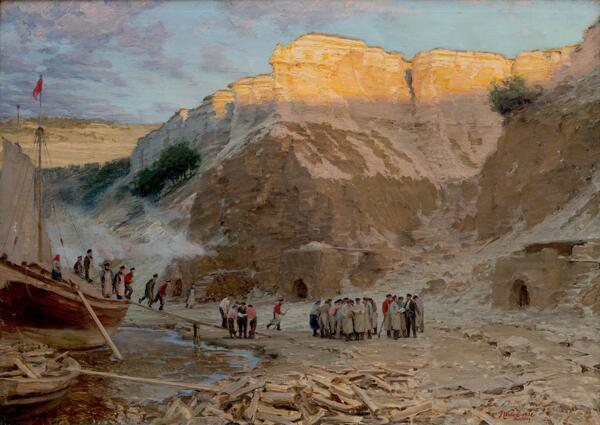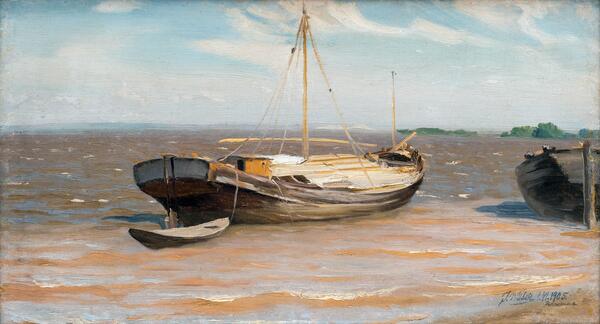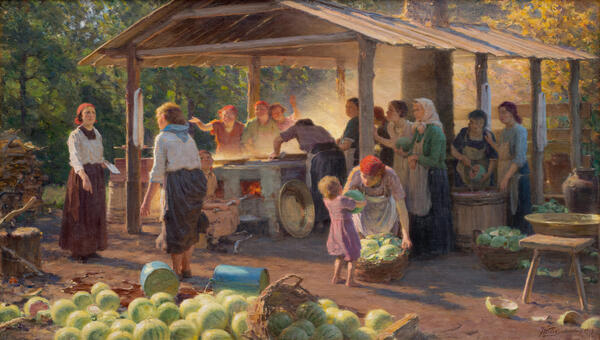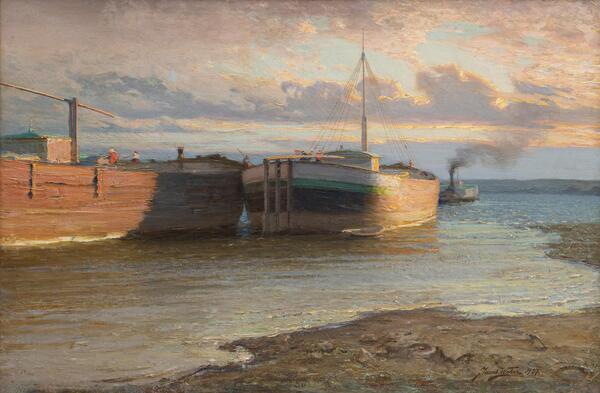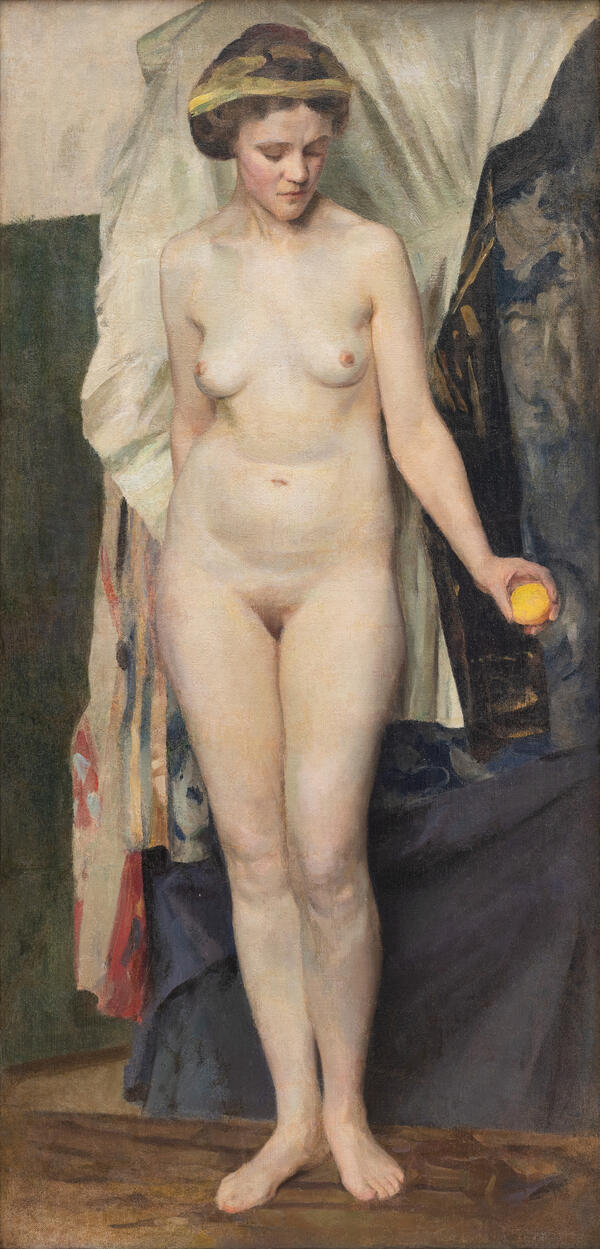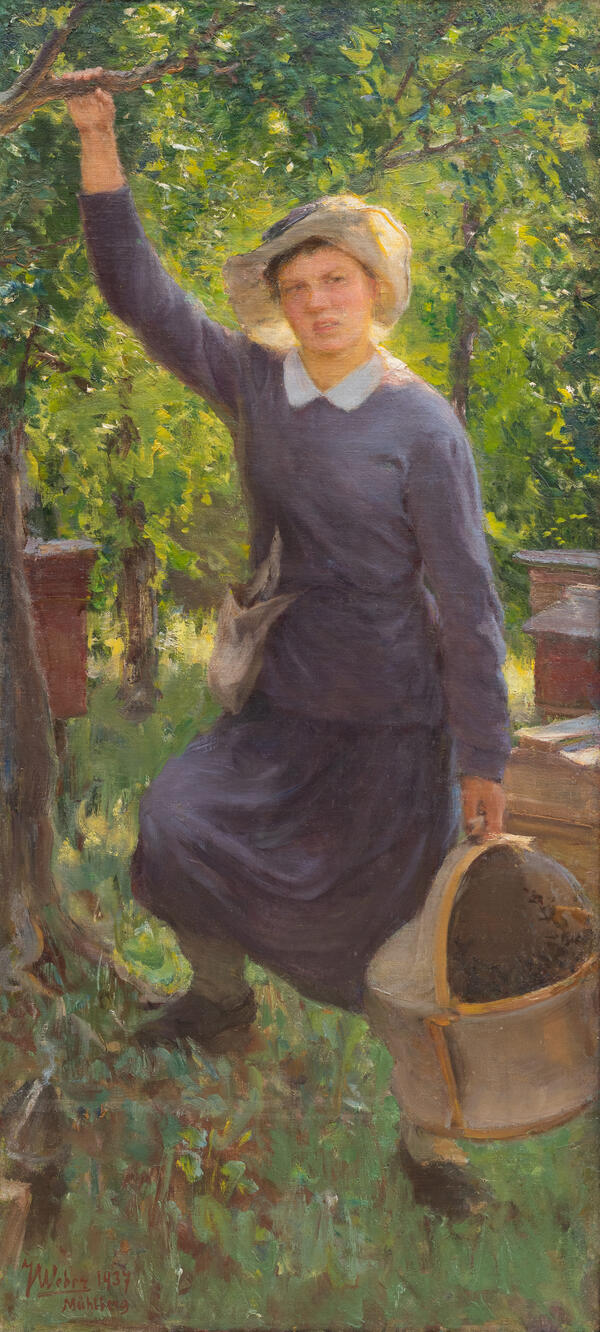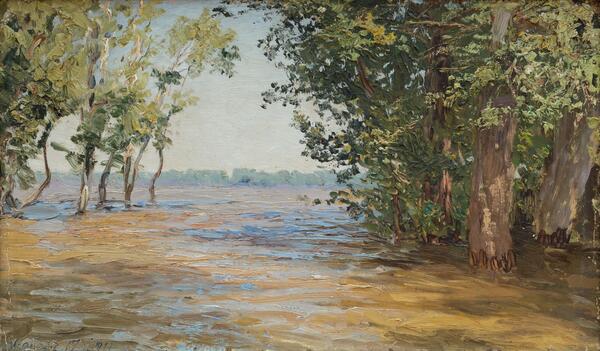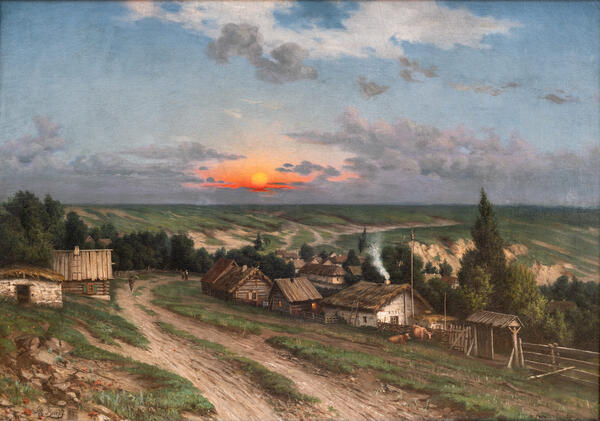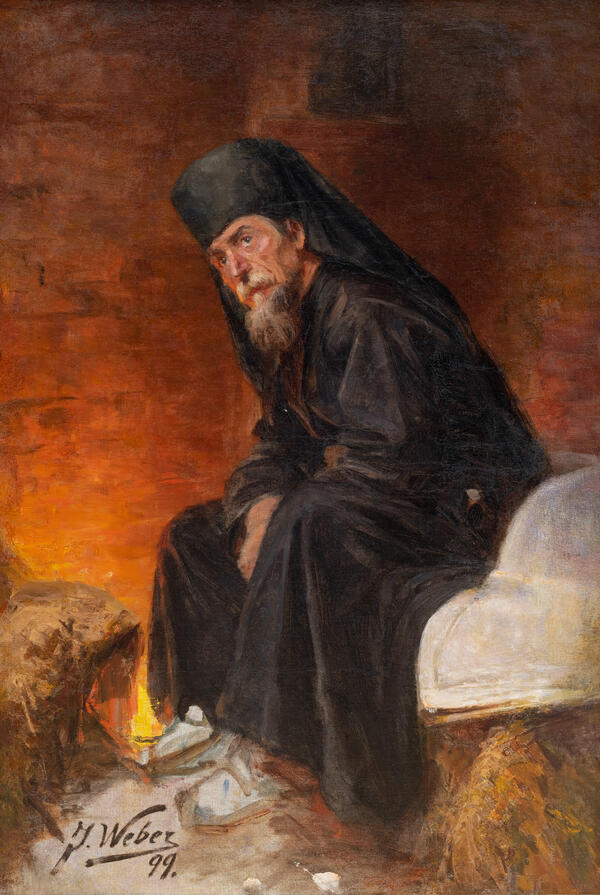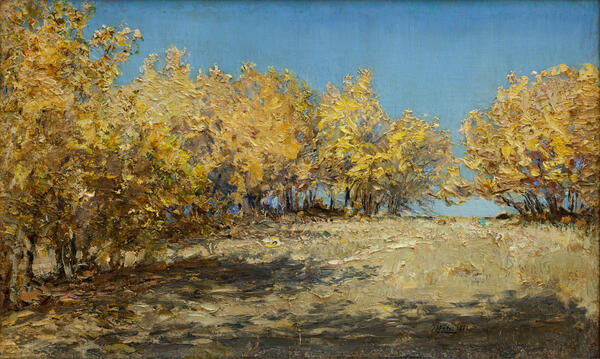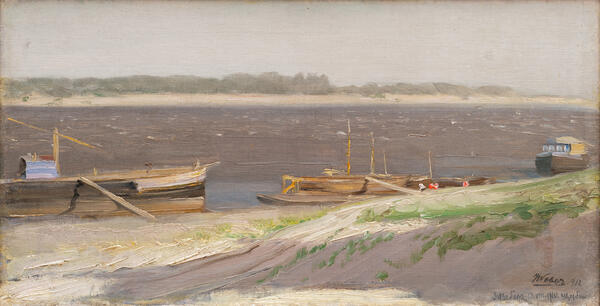The collection of the Engels Museum of Local Lore includes the painting “Autumn Motif” by Yakov Yakovlevich Weber.
Weber’s autumn with the motif of a road and a departing carriage is remarkably picturesque. The master’s keen eye and his impressionistic vision of nature produce color overtones on the surface of the canvas. The study-like painting offers a great freedom of expression, not limited by the rigor of the concept. Autumn, a muddy road, a distant yellowing strip of forest, a high horizon line and the infinity of blue sky allow the viewer to admire the colorful spots, the breadth and freedom of the impasto technique. The bright yellow spot of the wagon enlivens the composition and captures the eye of the viewer. The artist seems to assert that nature is beautiful in all its manifestations.
Yakov Weber, who turned constantly to the landscape genre, developed his own artistic language, which was not quite impressionistic, but rather continued the traditions of Russian painting, yet enriched with some qualities of French art. The poetic nature of the artist’s works appears to bring his art closer to the landscapes of the Peredvizhniki artists, but at the same time Weber’s work is unique. The artist chooses to depict unassuming motifs and expands the images all the time. The sensual expressiveness of Weber’s landscapes is the main distinguishing feature of the artist.
After the Russian Revolution, Yakov Weber was
already a mature painter with a well-established worldview and his own artistic
system. The period from 1918 to 1937 was most fruitful in the creative and
pedagogical activity of the artist. The largest number of preserved works
belongs to this period. About 50 works are known from this period, most of
which are landscapes. The paintings are part of the collection of the Engels
Museum of Local Lore. Several works are housed in the Chuvash State Art Museum
(Cheboksary), in the State Russian Museum (St. Petersburg) and in the private
collection of the artist’s family. Many of the paintings are not dated, but
they can be attributed to this period based on the motifs, themes and subjects
chosen by the artist.




